|
|
|
Книги издательства «Cambridge University Press»
|
Global distributive justice is now part of mainstream political debate. It incorporates issues that are now a familiar feature of the political landscape, such as global poverty, trade justice, aid to the developing world and debt cancellation. This is the first textbook to focus exclusively on issues of distributive justice on the global scale. It gives clear and up-to-date accounts of the major theories of global justice and spells out their significance for a series of important political issues, including climate change, international trade, human rights and migration. These issues are brought to life through the use of case studies, which emphasise the connection of theories of justice to contemporary politics, and 'Further Issues' sections, which discuss emerging debates or controversies that are likely to command increasing attention in the coming years. |

|
We have just experienced the worst financial crash the world has seen since the Great Depression of the 1930s. While real economies in general did not crash as they did in the 1930s, the financial parts of the economy certainly did, or, at least, came very close to doing so. Hundreds of banks in the United States and Europe have been closed by their supervisory authorities, forcibly merged with stronger partners, nationalized or recapitalized with the tax payers' money. Banks and insurance companies had, by mid 2010, already written off some 2000 billion dollars in credit write-downs on loans and securities. In this book, Johan Lybeck draws on his experience as both an academic economist and a professional banker to present a detailed yet non-technical analysis of the crash. He describes how the crisis began in early 2007, explains why it happened and shows how it compares to earlier financial crises. |
|
Globalization has fundamentally changed the game of business. Strategic frameworks developed for the analysis of purely domestic business necessarily fall short in the international business context. Managers and business students require new approaches to understand and cope with these far-reaching changes. We must learn to think globally in order to succeed. Global Competitive Strategy shows how we can do this by providing a unique set of strategic tools for international business. Such tools include the 'star analysis' that allows strategy makers to integrate geographic information with market information about the global business environment. Also introduced is the 'global value connection' that shows managers how to account for the gains from trade and the costs of trade. Aimed at MBA students taking courses in international strategy, consultants and practising managers with responsibility for strategic development, this book offers a comprehensive strategic framework for gaining competitive advantage in the global marketplace. |
|
The US economy today is confronted with the prospect of extended stagnation. This book explores why. Thomas I. Palley argues that the Great Recession and destruction of shared prosperity is due to flawed economic policy over the past thirty years. One flaw was the growth model adopted after 1980 that relied on debt and asset price inflation to fuel growth instead of wages. A second flaw was the model of globalization that created an economic gash. Financial deregulation and the house price bubble kept the economy going by making ever more credit available. As the economy cannibalized itself by undercutting income distribution and accumulating debt, it needed larger speculative bubbles to grow. That process ended when the housing bubble burst. The book explains why the economy is now confronted with stagnation rather than the quick recovery predicted by other accounts. |
|
Gender and sexuality have been neglected topics in the history of Chinese civilization, despite the fact that there is a massive amount of historical evidence on the subject. China's late imperial government was arguably more concerned about gender and sexuality among its subjects than any other pre-modern state. How did these and other late imperial legacies shape twentieth-century notions of gender and sexuality in modern China? Susan Mann answers this by focusing on state policy, ideas about the physical body and notions of sexuality and difference in China's recent history, from medicine to the theater to the gay bars; from law to art and sports. More broadly, the book shows how changes in attitudes toward sex and gender in China during the twentieth century have cast a new light on the process of becoming modern, while simultaneously challenging the universalizing assumptions of Western modernity. |

|
Presenting a fresh approach to French organ music, David Ponsford analyses the repertory from the reign of Louis XIV by genre. The colourful French organ was so consistent in design that the very titles of pieces that were constituent parts of organ masses, Magnificats and suites prescribed the registrations: plein jeu, fugue, duo, recit, trio, fond d'orgue and grand jeu. Particular examples from published livres d'orgue and important manuscript collections are analysed chronologically, so that influences from Italian as well as French sacred and secular music can be traced. This analysis reveals the dynamic development of compositional styles in which each composer developed, modified or reacted against the exemplars of his predecessors. Composers discussed include Louis Couperin, Francois Couperin, Raison, Clerambault and Marchand. The reader will gain an enhanced understanding of performance practices such as notes inegales, fingering and ornamentation, and the influence of French composers on J. S. Bach. |
|
This book provides a synthesis of concepts and materials that ordinarily appear separately in time series and econometrics literature, presenting a comprehensive review of both theoretical and applied concepts. Perhaps the most novel feature of the book is its use of Kalman filtering together with econometric and time series methodology. From a technical point of view, state space models and the Kalman filter play a key role in the statistical treatment of structural time series models. This technique was originally developed in control engineering but is becoming increasingly important in economics and operations research. The book is primarily concerned with modeling economic and social time series and with addressing the special problems that the treatment of such series pose. |
|
In Foreign and Second Language Learning, William Littlewood surveys recent research into how people acquire languages and considers its relevance for language teaching. He describes the most important studies and ideas about first language acquisition, and how these have influenced and developed into studies of second language acquisition. He considers the background of language theories which were current before the present interest in acquisition research, and looks at factors such as learners' errors, whether learners are predisposed to acquire language in certain sequences, why some people are apparently more successful at learning languages than others, and how learners make use of their new language to communicate. The use of clear examples, the careful explanation and balanced commentary on the research enable the reader to evaluate the evidence and consider the relevance of work in this field to the day to day concerns of teaching and learning languages. |
|
Since the first edition of this book, the world's financial system went through its greatest crisis for a century. What made this crisis unique is that severe financial problems emerged simultaneously in many different countries and that its economic impact was felt throughout the world as a result of the increased interconnectedness of the global economy. Written for undergraduate and graduate students of finance, economics and business, the second edition of this successful textbook provides a fresh analysis of the world financial system in light of the recent financial crisis. Combining theory, empirical data and policy, it examines and explains financial markets, financial infrastructures, financial institutions and challenges in the domain of financial supervision and competition policy. This new edition features three completely new chapters, one on financial crises, a second on financial innovation, and, on the policy side, a third on the monetary policy of the European Central Bank. |
|
A Concise History of Brazil covers almost 500 years of Brazilian history, from the arrival of the Portuguese in the New World to the political events that defined the transition in recent years from an authoritarian to a democratic political regime. Brazilian territorial unity and national identity were forged throughout the nineteenth century, after the proclamation of independence in 1822, resulting in a nation with one common language and wide ethnic and racial variety. Remarkable in this respect, the country nevertheless faces problems of social and ethnic disparity as well as of preservation and adequate use of its natural resources. This book emphasizes topics that have deeply influenced the historical formation of Brazil and affected its existence to the present day, such as the destruction of Indian civilizations, slavery and massive immigration throughout the last decades of the nineteenth century and the first decades of the twentieth century. |
|
Are foreign investors the privileged citizens of a new constitutional order that guarantees rates of return on investment interests? Schneiderman explores the linkages between a new investment rules regime and state constitutions — between a constitution-like regime for the protection of foreign investment and the constitutional projects of national states. The investment rules regime, as in classical accounts of constitutionalism, considers democratically authorized state action as inherently suspect. Despite the myriad purposes served by constitutionalism, the investment rules regime aims solely to enforce limits, both inside and outside of national constitutional systems, beyond which citizen-driven politics will be disabled. Drawing on contemporary and historical case studies, the author argues that any transnational regime should encourage innovation, experimentation, and the capacity to imagine alternative futures for managing the relationship between politics and markets. These objectives have been best accomplished via democratic institutions operating at national, sub-national, and local levels. |
|
Corpus linguistics is leading to the development of theories about language which challenge existing orthodoxies in applied linguistics. However, there are also many questions which should be examined and debated: how big should a corpus be? Is the data from a corpus reliable? What are its applications for language teaching? Corpora in Applied Linguistics exams these and other questions related to this emerging field. It discusses these important issues and explores the techniques of investigating a corpus, as well as demonstrating the application of corpora in a wide variety of fields. It also outlines the impact corpus linguistics is having on how languages are taught in the classroom and how it is informing language teaching materials and dictionaries. It makes a superb and accessible introduction to corpus linguistics and is a must read for anyone interested in corpus linguistics and its impact on applied linguistics. |
|
Corpus linguistics is the study of language data on a large scale — the computer-aided analysis of very extensive collections of transcribed utterances or written texts. This textbook outlines the basic methods of corpus linguistics, explains how the discipline of corpus linguistics developed and surveys the major approaches to the use of corpus data. It uses a broad range of examples to show how corpus data has led to methodological and theoretical innovation in linguistics in general. Clear and detailed explanations lay out the key issues of method and theory in contemporary corpus linguistics. A structured and coherent narrative links the historical development of the field to current topics in 'mainstream' linguistics. Practical tasks and questions for discussion at the end of each chapter encourage students to test their understanding of what they have read and an extensive glossary provides easy access to definitions of technical terms used in the text. |
|
This book is the first critical survey of the development and achievements of 'modern' Arabic poetry, here signifying the period from the latter half of the nineteenth century to the present day. It ranges over the entire Arabic-speaking world and includes a discussion of the work of poets who emigrated to the United States and Latin America. Four main stages are examined in the development of a specifically modern Arabic poetry: the 'neoclassical', in which poets turned to their literary heritage for their ideals and inspiration; the pre-romantic', which was marked by a tension between a modified classical style and new romantic sentiments, itself the reflection of a wider cultural movement towards change and modernization; the 'romantic', in which the tensions between form and content were resolved, and a lyricism and simplicity of language become the norm; and the 'modern' or 'contemporary' which is typified by a reaction against romanticism, and dominated by either committed social realism or symbolism and surrealism. In the absence of any similar published work in a European language, the book, as well as being designed for students of Arabic literature and of comparative literature, will also be of interest to the general reader. No knowledge of Arabic is presupposed: all the verse (newly translated by the author) is given in English translation, and technical terminology has been reduced to a minimum. |
|
This important volume on the critical pedagogical approach addresses such topics as critical multiculturalism, gender and language learning, and popular culture. Critical pedagogies are instructional approaches aimed at transforming existing social relations in the interest of greater equity in schools and communities. This paperback edition on the pedagogical approach addresses such topics as critical multiculturalism, gender and language learning, and popular culture. Committed to language education that contributes to social justice — and the political, economic, and sociocultural changes such justice requires — the contributors explore the meaning of creating equitable and critical instructional practices, by exploring diverse representations of knowledge. In addition, recommendations are made for further research, teacher education, and critical testing. Graduate students and researchers in TESOL, applied linguistics, and education will find this volume a thought-provoking and comprehensive presentation of theory and practice in this important new area of scholarship. |
|
Debate about trade and culture has a long history, but the application of WTO rules to cultural products such as films, radio, and books remains one of the most divisive issues in the organization. After assessing the economic and social arguments for treating cultural products differently from things like steel or wheat, this 2007 book explains how the vastly different views of WTO members in earlier negotiations led to an outcome that is disappointing for all. It goes on to provide a comprehensive evaluation of possible solutions, including evolution of the law through WTO dispute settlement, an agreement outside the WTO, and reforms to improve the balance between trade liberalization and cultural policy objectives. |
|
This 1986 book examines some of the main issues that have characterized macroeconomics: the debate between 'monetarists' and 'Keynesians'; the response to demand shocks and supply shocks, by which the monetary authorities control aggregrate nominal income and the use and relevance of the money supply as a target; and the consumption function and the determinants of wealth. It shows that Keynesian stabilization policies succeeded in reducing instability due to demand shocks dramatically, but that no aggregrate demand policy can stabilize both price and employment simultaneously after a supply shock. However, by assigning an overall 'social cost' to (excess) unemployment and (initially) unexpected inflation, an optimism path can be derived. In looking at the consumption function and determinants of wealth the empirical evidence is shown to be most consistent with the life-cycle hypothesis. A concluding section is devoted to the impact on private and national society of the 'social security revolution'. |
|
In this 1988 book, Iliana Zloch-Christy analyzes the causes and consequences of the massive Eastern European debt to the West accumulated in the 1970s. In assessing the region's convertible-currency debt problem, the author addresses five main issues: the origins of the debt; the possibility that such a debt was essential to Eastern Europe's economic development; the effects of the countries' own adjustments to the problem; Western policies toward resolving the Eastern European debt difficulties; and the outlook for the debt during the rest of the 1980s. This book evaluates the flaws of the centrally planned economies that led to the crisis, as well as the countries' lack of effective structural adjustment. The author also covers the roles of the International Monetary Fund and the World Bank, and looks at the potential debt consequences of resurging East-West trade. |
|
The Discarded Image paints a lucid picture of the medieval world view, providing the historical and cultural background to the literature of the middle ages and renaissance. It describes the 'image' discarded by later years as 'the medieval synthesis itself, the whole organisation of their theology, science and history into a single, complex, harmonious mental model of the universe'. This, Lewis's last book, has been hailed as 'the final memorial to the work of a great scholar and teacher and a wise and noble mind'. |

|
Discourse and Language Education is part of the Cambridge Language Teaching Library series. Discourse analysis describes how such communication is structured, so that it is socially appropriate and linguistically accurate. This book gives practical experience in analyzing discourse and the study of written language. The analyses show the ways we use linguistic signals to carry out our discourse goals and the differences between written and spoken language as well as across languages. This text can be used as a manual in teacher education courses and linguistics and communications courses. It will be of great interest to second language teachers, foreign language teachers, and special education teachers (especially those involved with the hearing impaired). |
|